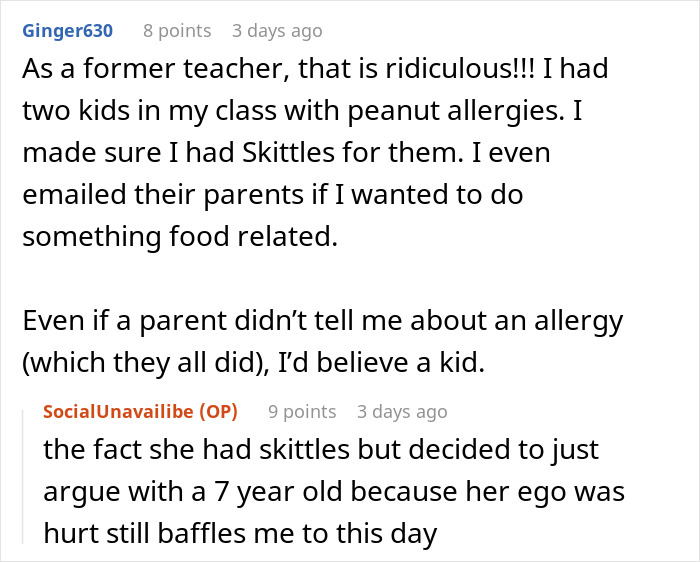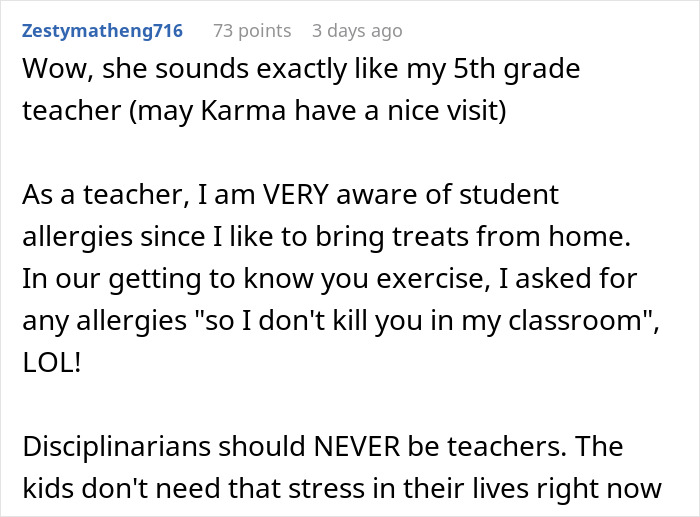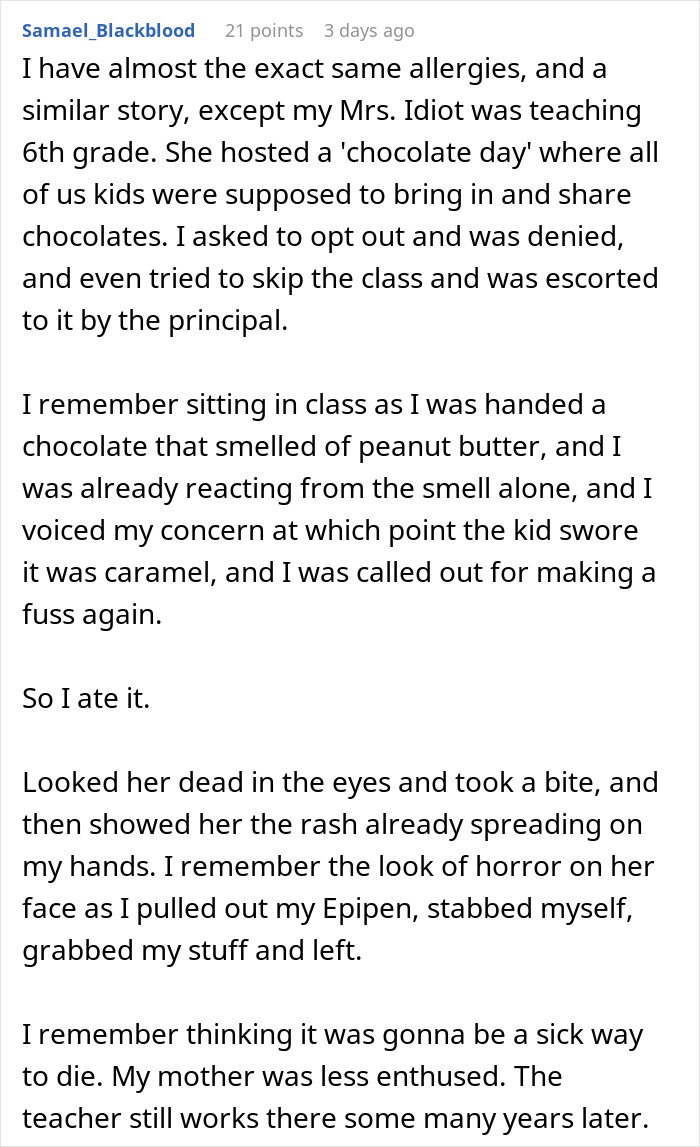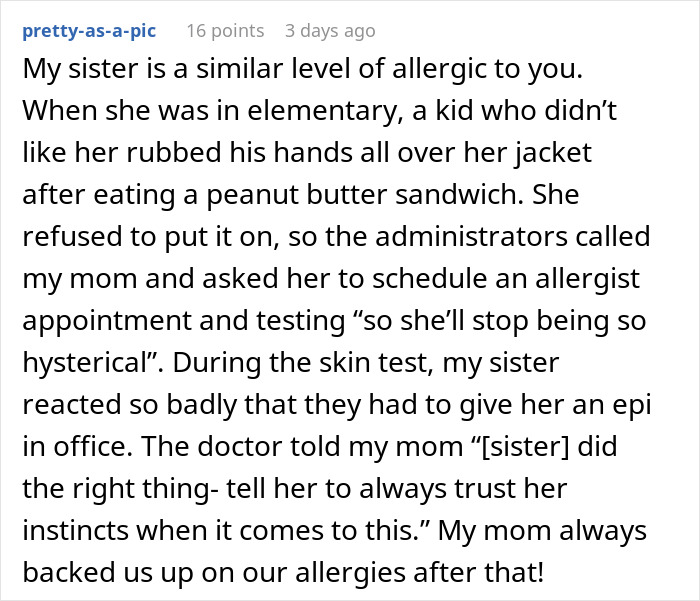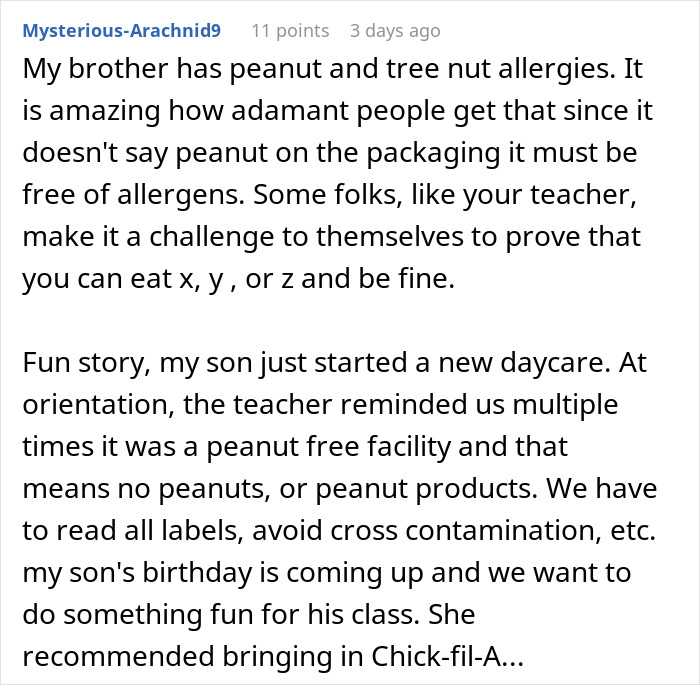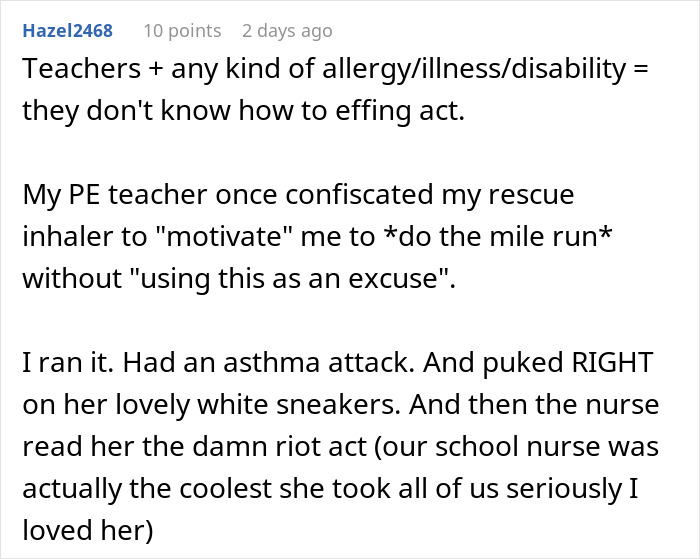We spend our entire lives learning new things. But while Reddit user SocialUnavailibe was still a student, one of their teachers had forgotten this.
In a post on ‘Malicious Compliance,’ they described a lesson they had in grade school when the teacher took out a bag of candy to reward the kids, and dismissed the Redditor’s allergy concerns, thinking she knew better.
Now whether or not that was some sort of ego thing, we can only guess. Luckily, the lady got schooled before any real harm was done.
This teacher tried to convince a kid with nut allergies to have some M&M’s

Image credits: valeriygoncharukphoto / envato (not the actual photo)
And got really defensive when the student raised concerns about their health


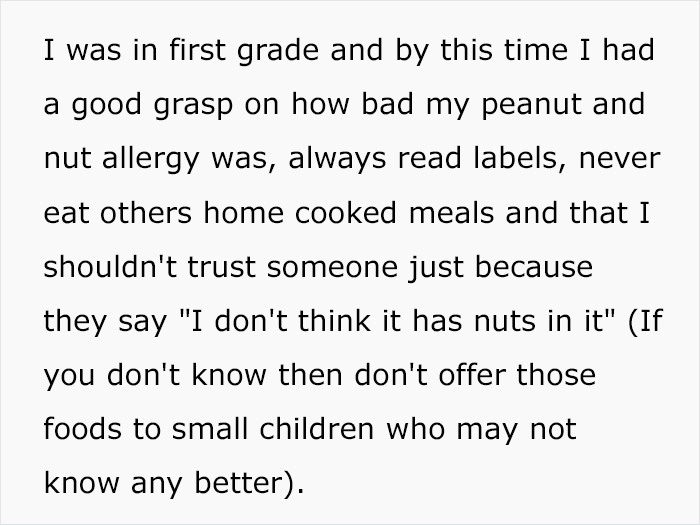




Image credits: Aka Hige / flickr (not the actual photo)






Image credits: SocialUnavailibe
Food allergies are no joke

Image credits: RDNE Stock project / pexels (not the actual photo)
In plain language, a food allergy is a phenomenon when a person’s immune system overreacts to something in a certain food. This part of the food that the body reacts to (which is usually a protein) is called an allergen. The immune system thinks the allergen is a threat and tries to attack it. This response causes a range of symptoms, known as allergic reactions.
In the United States, 1-in-10 adults and 1-13 children have a food allergy. This equates to around 33 million people. Furthermore, 51% of grown-ups and 42% of kids suffering from one have had a severe reaction.
More than 170 foods have been reported to cause food allergic reactions in the country. In 2004, eight major food allergens—milk, egg, peanut, tree nuts, wheat, soy, fish, and crustacean shellfish—were identified as responsible for at least 90 percent of serious cases. In 2021, the U.S. also added sesame as the ninth major food allergen.
About one in three children with food allergies reported being bullied due to it. Moreover, among children with allergies to more than two foods, over half said they were being bullied due to them.
And the troubles don’t end there. According to a 2011–2012 analysis, caring for children with food allergies costs U.S. families nearly $25 billion annually. In CPI-adjusted dollars, this comes to $33 billion in 2024.
It’s very good that the author of the post understood the severity of her condition at a young age. Over 15 percent of school-aged children with food allergies have had a reaction in school, and approximately 20–25 percent of epinephrine administrations in schools involve individuals whose allergy was unknown at the time of the reaction.
Allergies to milk, egg, wheat, and soy can resolve in childhood, but children may outgrow at least some of these food sensitivities more slowly than was found in previous decades, with many children still allergic beyond age 5.
Allergies to peanuts, tree nuts, and shellfish, however, are generally lifelong.
As people reacted to the story, its author joined the discussion in the comment section
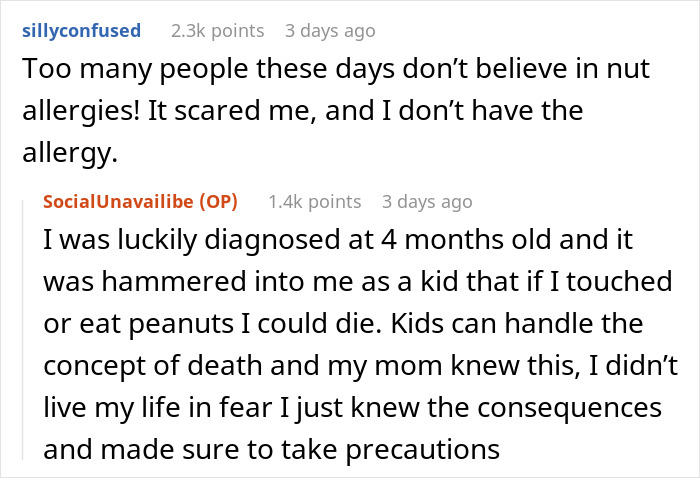
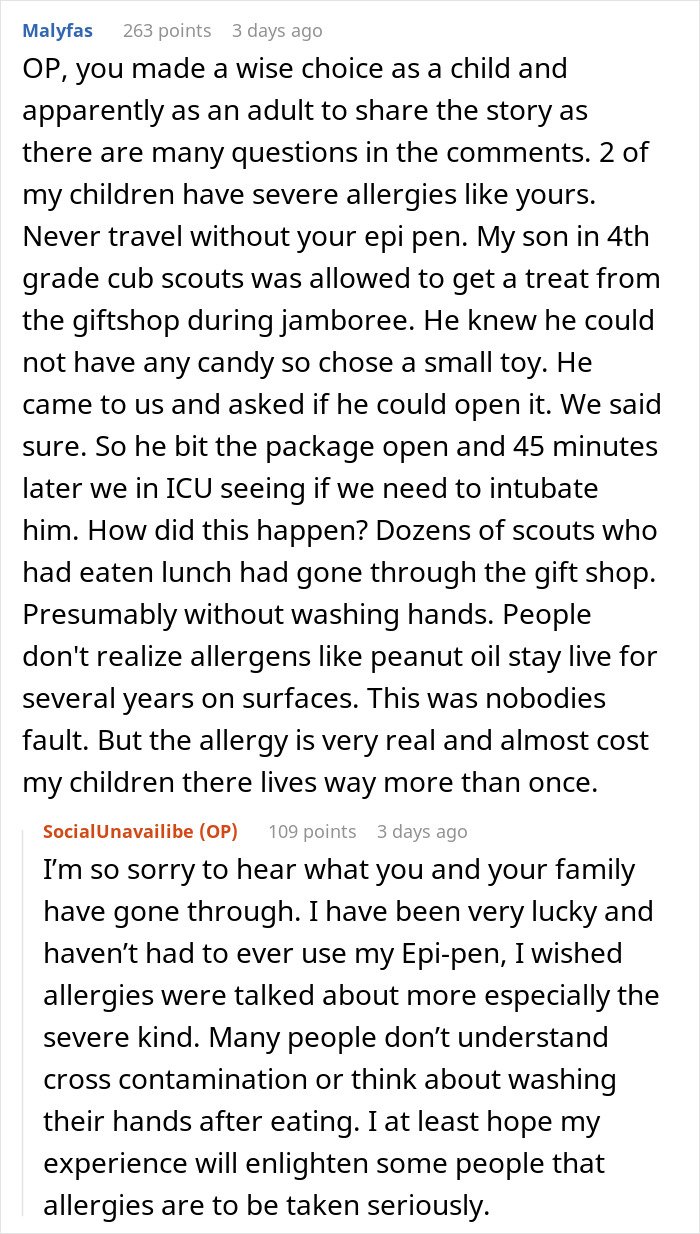
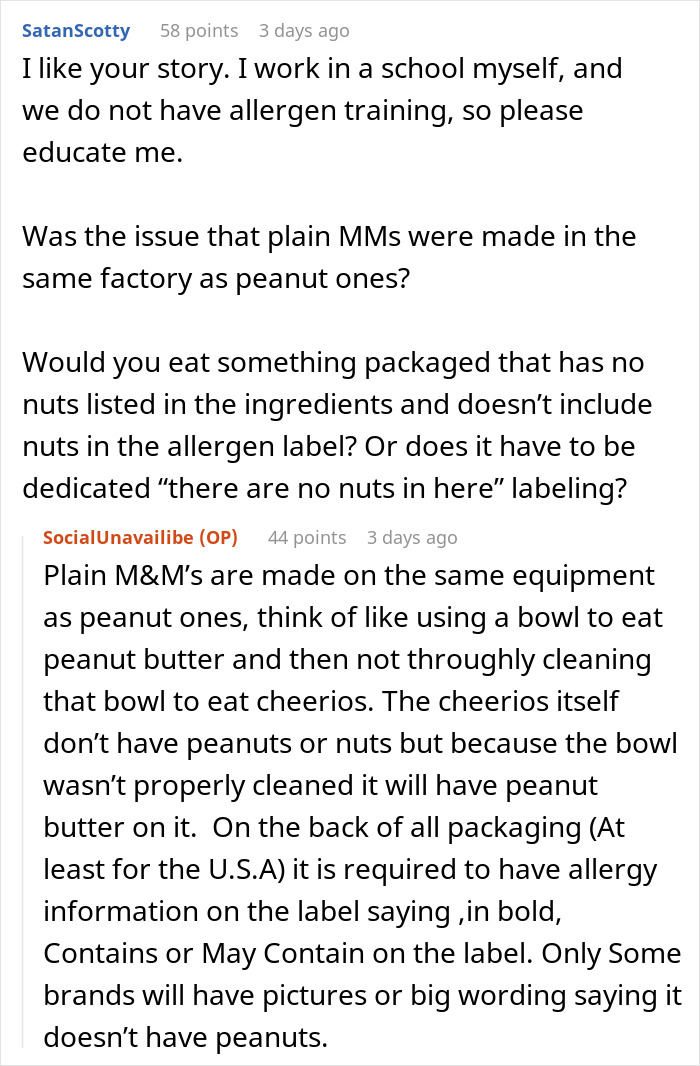
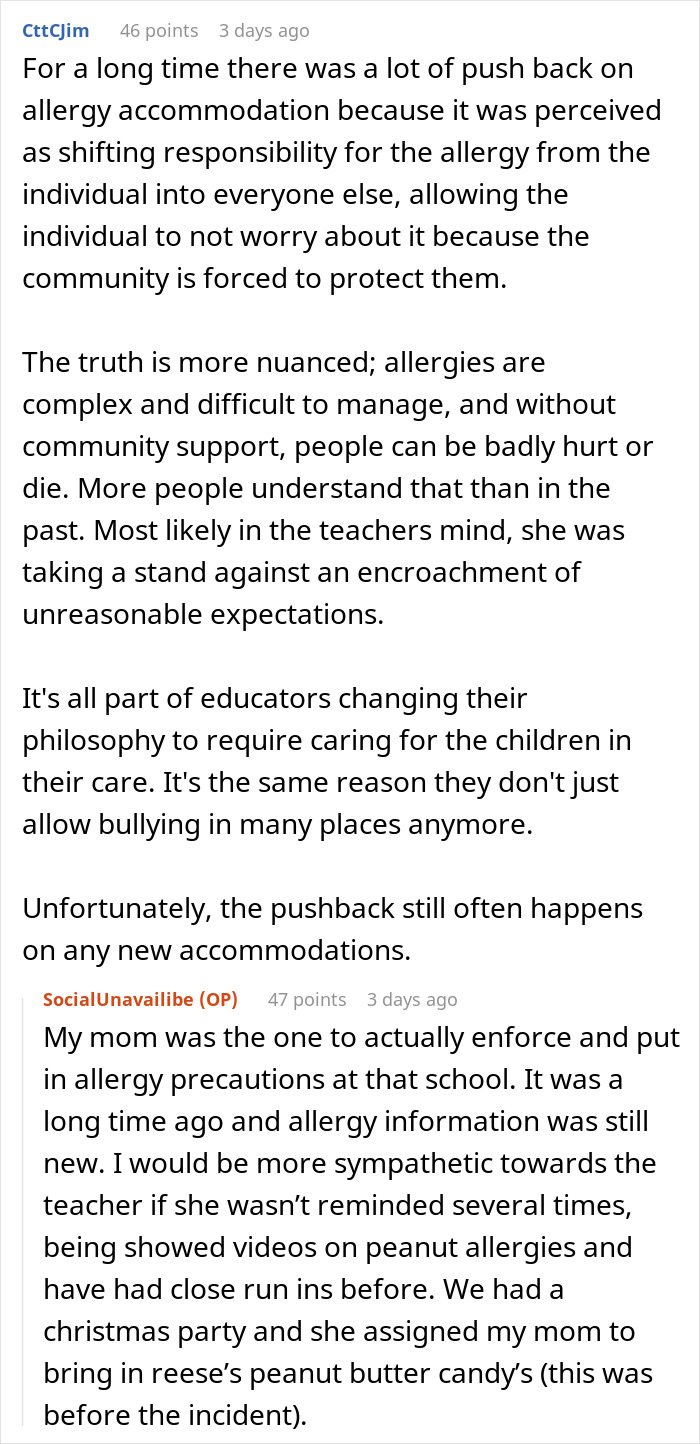
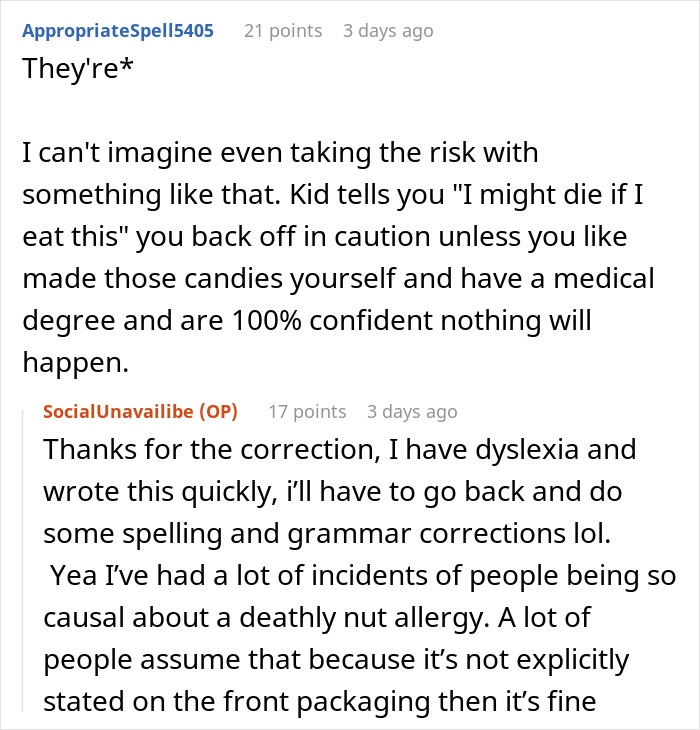


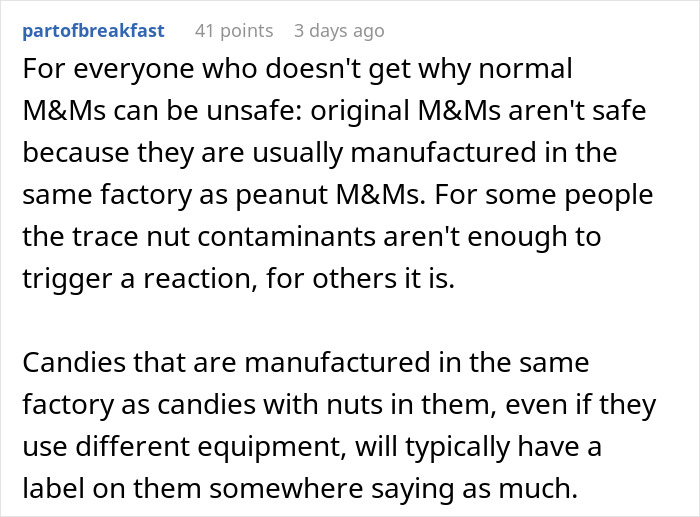

And some folks even shared their own similar experiences
